Matthias Gallé
The Multilingual Divide and Its Impact on Global AI Safety
May 27, 2025Abstract:Despite advances in large language model capabilities in recent years, a large gap remains in their capabilities and safety performance for many languages beyond a relatively small handful of globally dominant languages. This paper provides researchers, policymakers and governance experts with an overview of key challenges to bridging the "language gap" in AI and minimizing safety risks across languages. We provide an analysis of why the language gap in AI exists and grows, and how it creates disparities in global AI safety. We identify barriers to address these challenges, and recommend how those working in policy and governance can help address safety concerns associated with the language gap by supporting multilingual dataset creation, transparency, and research.
Aya Vision: Advancing the Frontier of Multilingual Multimodality
May 13, 2025Abstract:Building multimodal language models is fundamentally challenging: it requires aligning vision and language modalities, curating high-quality instruction data, and avoiding the degradation of existing text-only capabilities once vision is introduced. These difficulties are further magnified in the multilingual setting, where the need for multimodal data in different languages exacerbates existing data scarcity, machine translation often distorts meaning, and catastrophic forgetting is more pronounced. To address the aforementioned challenges, we introduce novel techniques spanning both data and modeling. First, we develop a synthetic annotation framework that curates high-quality, diverse multilingual multimodal instruction data, enabling Aya Vision models to produce natural, human-preferred responses to multimodal inputs across many languages. Complementing this, we propose a cross-modal model merging technique that mitigates catastrophic forgetting, effectively preserving text-only capabilities while simultaneously enhancing multimodal generative performance. Aya-Vision-8B achieves best-in-class performance compared to strong multimodal models such as Qwen-2.5-VL-7B, Pixtral-12B, and even much larger Llama-3.2-90B-Vision. We further scale this approach with Aya-Vision-32B, which outperforms models more than twice its size, such as Molmo-72B and LLaMA-3.2-90B-Vision. Our work advances multilingual progress on the multi-modal frontier, and provides insights into techniques that effectively bend the need for compute while delivering extremely high performance.
Command A: An Enterprise-Ready Large Language Model
Apr 01, 2025Abstract:In this report we describe the development of Command A, a powerful large language model purpose-built to excel at real-world enterprise use cases. Command A is an agent-optimised and multilingual-capable model, with support for 23 languages of global business, and a novel hybrid architecture balancing efficiency with top of the range performance. It offers best-in-class Retrieval Augmented Generation (RAG) capabilities with grounding and tool use to automate sophisticated business processes. These abilities are achieved through a decentralised training approach, including self-refinement algorithms and model merging techniques. We also include results for Command R7B which shares capability and architectural similarities to Command A. Weights for both models have been released for research purposes. This technical report details our original training pipeline and presents an extensive evaluation of our models across a suite of enterprise-relevant tasks and public benchmarks, demonstrating excellent performance and efficiency.
If You Can't Use Them, Recycle Them: Optimizing Merging at Scale Mitigates Performance Tradeoffs
Dec 05, 2024
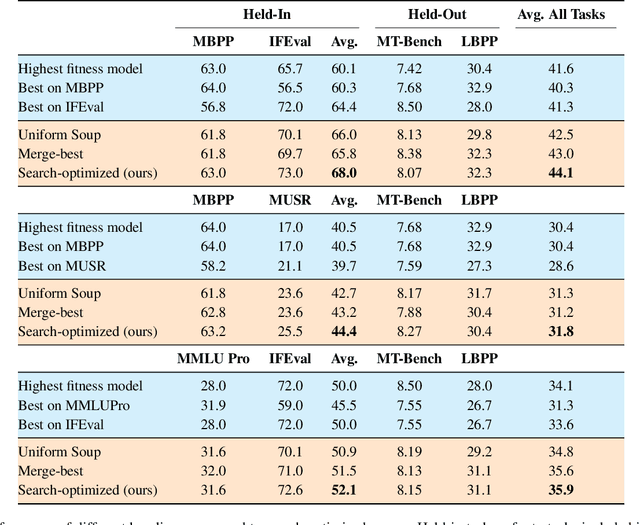
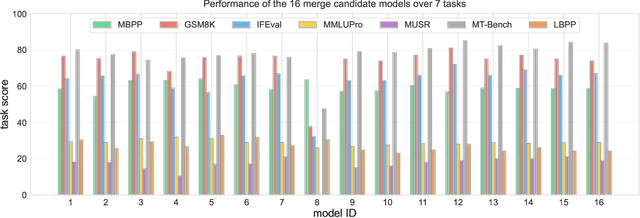
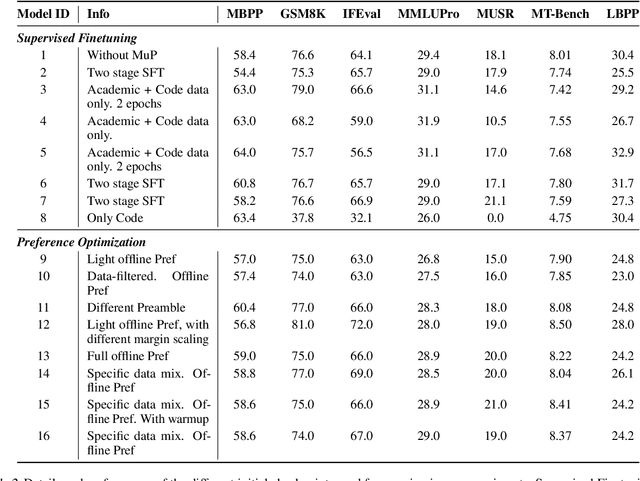
Abstract:Model merging has shown great promise at combining expert models, but the benefit of merging is unclear when merging ``generalist'' models trained on many tasks. We explore merging in the context of large ($\sim100$B) models, by \textit{recycling} checkpoints that exhibit tradeoffs among different tasks. Such checkpoints are often created in the process of developing a frontier model, and many suboptimal ones are usually discarded. Given a pool of model checkpoints obtained from different training runs (e.g., different stages, objectives, hyperparameters, and data mixtures), which naturally show tradeoffs across different language capabilities (e.g., instruction following vs. code generation), we investigate whether merging can recycle such suboptimal models into a Pareto-optimal one. Our optimization algorithm tunes the weight of each checkpoint in a linear combination, resulting in a Pareto-optimal models that outperforms both individual models and merge-based baselines. Further analysis shows that good merges tend to include almost all checkpoints with with non-zero weights, indicating that even seemingly bad initial checkpoints can contribute to good final merges.
Commit0: Library Generation from Scratch
Dec 02, 2024Abstract:With the goal of benchmarking generative systems beyond expert software development ability, we introduce Commit0, a benchmark that challenges AI agents to write libraries from scratch. Agents are provided with a specification document outlining the library's API as well as a suite of interactive unit tests, with the goal of producing an implementation of this API accordingly. The implementation is validated through running these unit tests. As a benchmark, Commit0 is designed to move beyond static one-shot code generation towards agents that must process long-form natural language specifications, adapt to multi-stage feedback, and generate code with complex dependencies. Commit0 also offers an interactive environment where models receive static analysis and execution feedback on the code they generate. Our experiments demonstrate that while current agents can pass some unit tests, none can yet fully reproduce full libraries. Results also show that interactive feedback is quite useful for models to generate code that passes more unit tests, validating the benchmarks that facilitate its use.
On Leakage of Code Generation Evaluation Datasets
Jul 11, 2024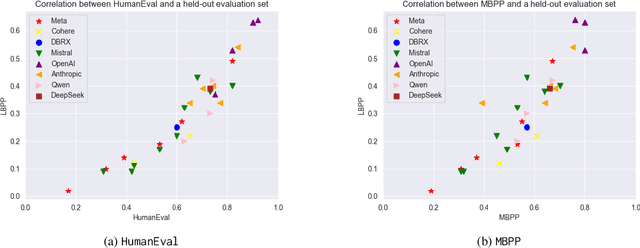
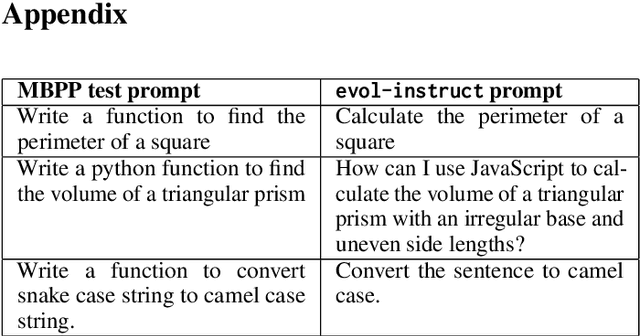
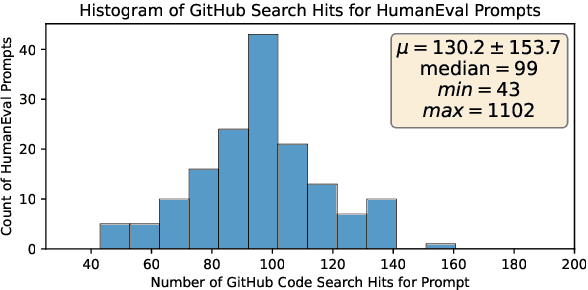
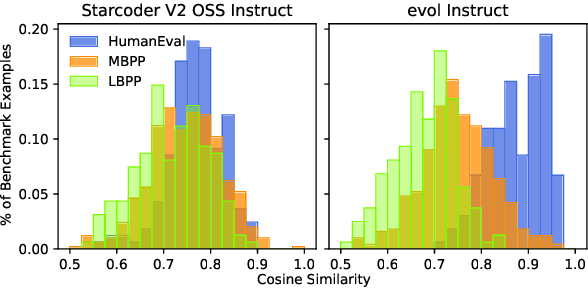
Abstract:In this paper we consider contamination by code generation test sets, in particular in their use in modern large language models. We discuss three possible sources of such contamination and show findings supporting each of them: (i) direct data leakage, (ii) indirect data leakage through the use of synthetic data and (iii) overfitting to evaluation sets during model selection. Key to our findings is a new dataset of 161 prompts with their associated python solutions, dataset which is released at https://huggingface.co/datasets/CohereForAI/lbpp .
Improving Reward Models with Synthetic Critiques
May 31, 2024

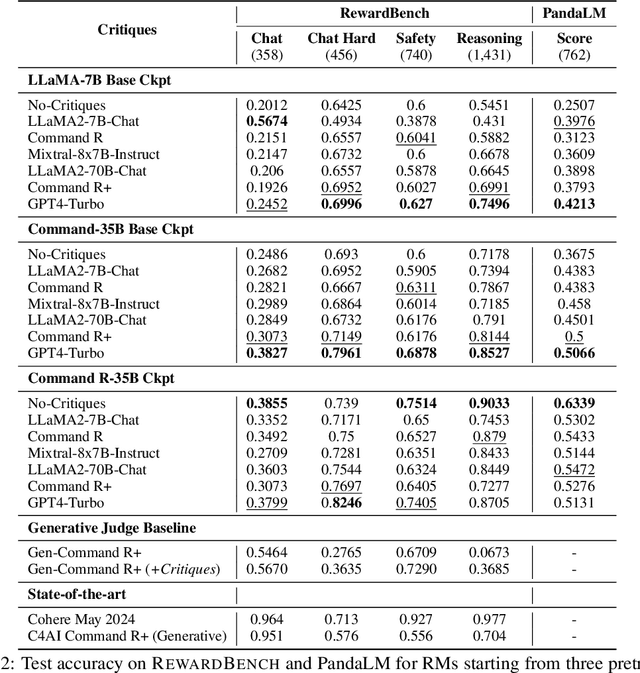
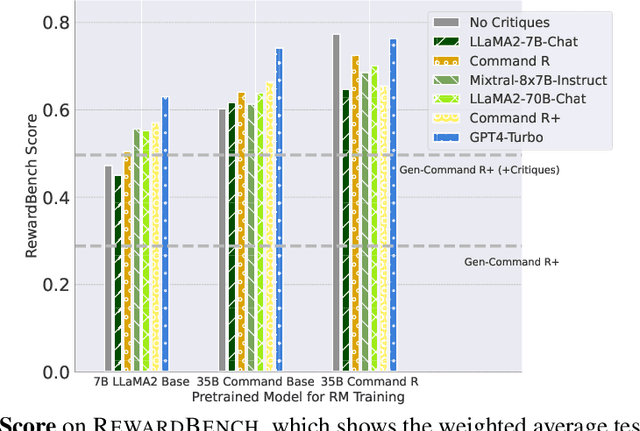
Abstract:Reward models (RM) play a critical role in aligning language models through the process of reinforcement learning from human feedback. RMs are trained to predict a score reflecting human preference, which requires significant time and cost for human annotation. Additionally, RMs tend to quickly overfit on superficial features in the training set, hindering their generalization performance on unseen distributions. We propose a novel approach using synthetic natural language critiques generated by large language models to provide additional feedback, evaluating aspects such as instruction following, correctness, and style. This offers richer signals and more robust features for RMs to assess and score on. We demonstrate that high-quality critiques improve the performance and data efficiency of RMs initialized from different pretrained models. Conversely, we also show that low-quality critiques negatively impact performance. Furthermore, incorporating critiques enhances the interpretability and robustness of RM training.
LLMCRIT: Teaching Large Language Models to Use Criteria
Mar 02, 2024Abstract:Humans follow criteria when they execute tasks, and these criteria are directly used to assess the quality of task completion. Therefore, having models learn to use criteria to provide feedback can help humans or models to perform tasks better. However, existing research in this field tends to consider only a limited set of criteria or quality assessment aspects. To fill this gap, we propose a general framework that enables large language models (LLMs) to use comprehensive criteria for a task in delivering natural language feedback on task execution. In particular, we present a model-in-the-loop framework that semi-automatically derives criteria from collected guidelines for different writing tasks and constructs in-context demonstrations for each criterion. We choose three tasks from real-world scenarios to operationalize this idea: paper introduction writing, Python code writing, and Reddit post writing, and evaluate our feedback generation framework using different LLMs. The results reveal the fine-grained effects of incorporating criteria and demonstrations and provide valuable insights on how to teach LLMs to use criteria more effectively.
Back to Basics: Revisiting REINFORCE Style Optimization for Learning from Human Feedback in LLMs
Feb 26, 2024Abstract:AI alignment in the shape of Reinforcement Learning from Human Feedback (RLHF) is increasingly treated as a crucial ingredient for high performance large language models. Proximal Policy Optimization (PPO) has been positioned by recent literature as the canonical method for the RL part of RLHF. However, it involves both high computational cost and sensitive hyperparameter tuning. We posit that most of the motivational principles that led to the development of PPO are less of a practical concern in RLHF and advocate for a less computationally expensive method that preserves and even increases performance. We revisit the formulation of alignment from human preferences in the context of RL. Keeping simplicity as a guiding principle, we show that many components of PPO are unnecessary in an RLHF context and that far simpler REINFORCE-style optimization variants outperform both PPO and newly proposed "RL-free" methods such as DPO and RAFT. Our work suggests that careful adaptation to LLMs alignment characteristics enables benefiting from online RL optimization at low cost.
BLOOM: A 176B-Parameter Open-Access Multilingual Language Model
Nov 09, 2022Abstract:Large language models (LLMs) have been shown to be able to perform new tasks based on a few demonstrations or natural language instructions. While these capabilities have led to widespread adoption, most LLMs are developed by resource-rich organizations and are frequently kept from the public. As a step towards democratizing this powerful technology, we present BLOOM, a 176B-parameter open-access language model designed and built thanks to a collaboration of hundreds of researchers. BLOOM is a decoder-only Transformer language model that was trained on the ROOTS corpus, a dataset comprising hundreds of sources in 46 natural and 13 programming languages (59 in total). We find that BLOOM achieves competitive performance on a wide variety of benchmarks, with stronger results after undergoing multitask prompted finetuning. To facilitate future research and applications using LLMs, we publicly release our models and code under the Responsible AI License.
 Add to Chrome
Add to Chrome Add to Firefox
Add to Firefox Add to Edge
Add to Edge